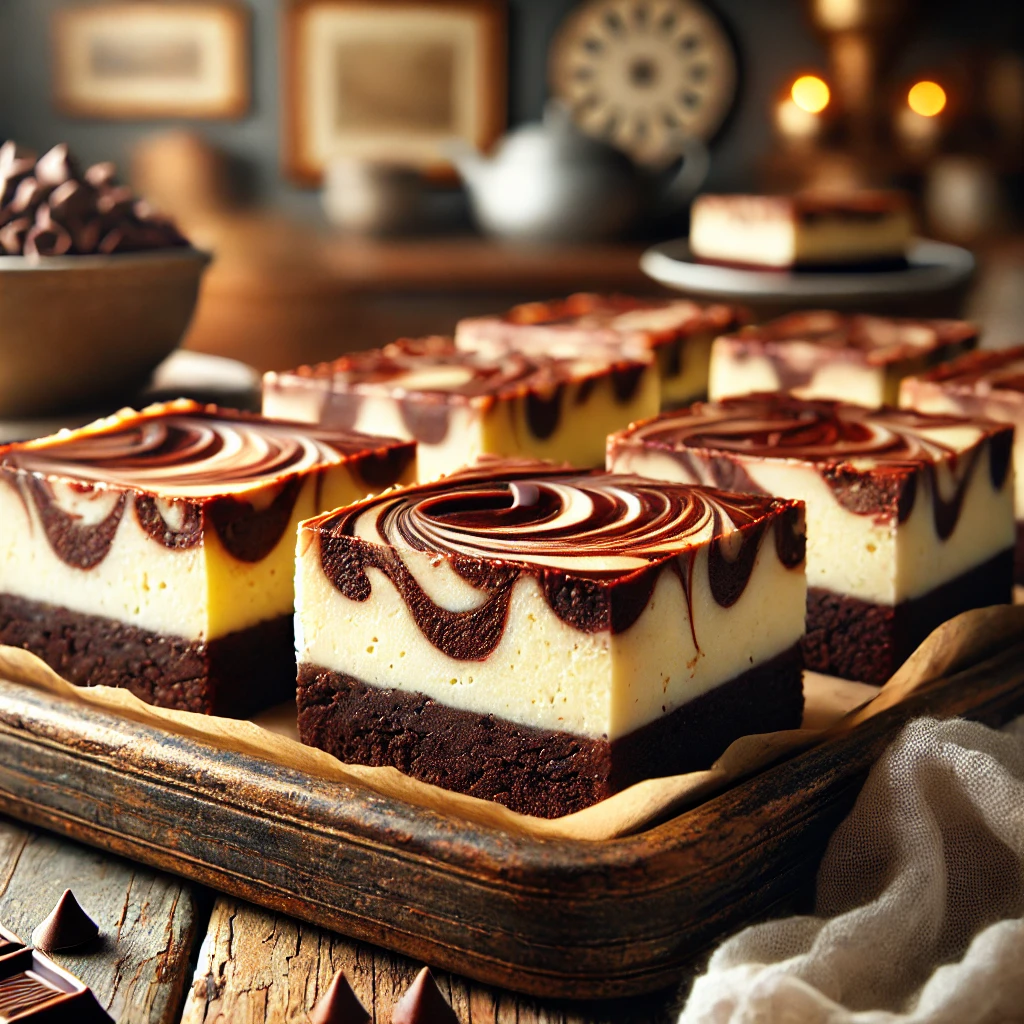
Introduction
Who doesn’t love the combination of chocolate and peanut butter? These two timeless flavors come together in the ultimate dessert fusion: peanut butter brownies. This guide dives deep into creating the perfect peanut butter brownie recipe, complete with tips, tricks, and variations to suit your taste. Whether you’re a seasoned baker or just starting, this article will walk you through the process step by step, ensuring you achieve those gooey, fudgy brownies everyone craves.
Part 1: Introduction to Peanut Butter Brownies
What Makes Peanut Butter Brownies Unique?
Peanut butter brownies aren’t your average sweet treat. They combine the rich, chocolatey decadence of traditional brownies with the nutty creaminess of peanut butter, creating a dessert that’s both indulgent and satisfying. The peanut butter swirl adds not just visual appeal but also a delightful contrast in texture and flavor, making each bite an experience.
What sets them apart is their versatility. They’re perfect for parties, casual get-togethers, or as a personal indulgence on a lazy weekend. With just a handful of pantry staples, you can whip up a batch that rivals any bakery treat.
Why This Recipe Stands Out
This peanut butter brownie recipe is all about simplicity and flavor. Unlike store-bought mixes, it’s made from scratch with no preservatives, allowing you to control the quality of ingredients. Plus, you can customize the sweetness, richness, and even the size of the swirls to your liking.
Another reason this recipe shines is its adaptability. Whether you’re a fan of gooey brownies with a soft center or prefer a firmer, cakier texture, this guide has you covered. And let’s not forget the added nutrition peanut butter brings, making these brownies a slightly less guilty pleasure.
Part 2: Essential Ingredients for Perfect Brownies
Choosing the Right Chocolate: Tips and Tricks
The foundation of any great peanut butter brownie recipe is high-quality chocolate. Since chocolate is the star of the batter, it’s important to invest in a rich, flavorful option. Semi-sweet chocolate chips work well, but if you’re aiming for the ultimate indulgence, consider using chopped chocolate bars. These melt smoother and create a luscious, silky texture.
If you don’t have chocolate bars on hand, opt for premium chocolate chips. Avoid lower-quality ones, as they often have a waxy coating that prevents them from melting evenly. Want a deeper flavor? Mix semi-sweet with dark chocolate for a rich, bittersweet balance.
Selecting Peanut Butter: Creamy vs. Natural
Not all peanut butters are created equal when it comes to baking. For this peanut butter brownie recipe, stick to commercial brands like Jif or Skippy. Their smooth, creamy consistency ensures easy swirling and no separation. While natural peanut butter might seem healthier, its oil content can lead to uneven results.
Want to take it up a notch? Experiment with flavored peanut butters, like honey-roasted or chocolate-infused, to give your brownies a unique twist.
The Role of Cocoa Powder and Sugars in Texture and Flavor
The combination of cocoa powder and sugar is what gives brownies their signature fudgy texture. Use natural, unsweetened cocoa powder for a deep, chocolatey taste. Dutch-process cocoa powder can work, too, but it tends to mellow out the boldness of the chocolate.
For the sugars, a blend of white and brown sugar creates the perfect texture. While granulated sugar brings sweetness, the molasses in brown sugar adds moisture and chewiness. Don’t have brown sugar? You can easily make your own by mixing white sugar with a touch of molasses.
Part 3: Step-by-Step Instructions
Preparing the Ingredients: From Room-Temperature Eggs to Sifting Flour
Before you dive into the mixing process, preparation is key. Start by bringing your eggs to room temperature—this ensures they blend seamlessly into the batter. If you forgot to set them out ahead of time, a quick soak in warm water for 5 minutes does the trick.
Don’t skip sifting the dry ingredients, especially the flour and cocoa powder. Sifting not only eliminates lumps but also aerates the mixture, making your brownies light yet fudgy.
Creating the Brownie Batter
Begin by melting unsalted butter and chocolate together. Whether you use a microwave or a stovetop, stir constantly to prevent scorching. Once melted, let it cool slightly before adding sugars, eggs, and vanilla extract. Whisk until smooth.
Next, fold in the dry ingredients gently with a spatula. Avoid overmixing—it can make your brownies dense. A few streaks of flour are fine as long as everything is mostly incorporated.
Adding and Swirling Peanut Butter: Tips for the Perfect Look
Once your batter is ready, pour it into a prepared baking pan lined with parchment paper. Dollop spoonfuls of creamy peanut butter across the top. Using a knife or skewer, swirl the peanut butter into the batter. For the best swirls, less is more—too much mixing can make the peanut butter blend in completely, losing the striking pattern.
Baking the Brownies: Achieving a Fudgy or Firm Texture
Bake your brownies in a preheated oven at 350°F. For a gooey center, aim for 35 minutes. If you prefer a firmer bite, let them bake for 40-45 minutes. To check doneness, give the pan a gentle shake—if the center wobbles slightly, they’re ready. Remember, they’ll continue to set as they cool.
Part 4: Pro Tips for Baking Peanut Butter Brownies
Avoiding Common Mistakes: Mixing and Measuring
To perfect any peanut butter brownie recipe, attention to detail is key. One common pitfall is overmixing the batter. When combining wet and dry ingredients, use a spatula and gently fold. Overmixing develops gluten in the flour, resulting in dense, tough brownies—definitely not what you’re aiming for.
Precision is another must. Use a kitchen scale to measure your ingredients, especially flour and cocoa powder. This ensures consistent results every time. If you’re using measuring cups, remember to spoon the flour into the cup and level it off with a knife—don’t scoop directly from the bag, or you risk packing in too much.
Tricks for Cleanly Cutting Brownies
Want those picture-perfect brownie squares? Here’s the trick: use a warm, damp knife. Rinse the blade with warm water and wipe it clean between each cut. It prevents the knife from dragging and smearing, leaving you with clean edges that look as good as they taste.
For an extra professional touch, allow the brownies to cool completely before slicing. Warm brownies, though tempting, can crumble and lose their structure. Patience is a baker’s secret weapon!
How to Adjust for Personal Preferences: Sweetness and Richness
Baking is all about balance, and this peanut butter brownie recipe is no exception. Prefer a darker, richer flavor? Substitute some of the semi-sweet chocolate with dark chocolate. Crave a sweeter bite? Add a handful of white chocolate chips or increase the brown sugar slightly.
For a nutty twist, sprinkle crushed peanuts on top before baking, adding texture and amplifying the peanut butter theme.
Part 5: Serving and Storing Your Brownies
Best Ways to Serve: Warm, Chilled, or Topped
Peanut butter brownies are delightful on their own, but serving them warm takes them to the next level. Gently reheat a slice in the microwave for about 10 seconds, just enough to soften the peanut butter swirls and make the chocolate irresistibly gooey.
For a chilled treat, refrigerate the brownies and serve them cold. They become denser and chewier, perfect for pairing with a hot cup of coffee or tea. Want to go all out? Add a scoop of vanilla ice cream, drizzle with chocolate syrup, and sprinkle crushed peanuts for a decadent dessert.
Storage Options: Room Temperature vs. Freezing
Proper storage keeps your peanut butter brownie recipe fresh and flavorful. At room temperature, store the brownies in an airtight container for up to four days. For longer storage, refrigerate them—they’ll stay fresh for about a week.
Thinking long-term? These brownies freeze beautifully. Wrap each piece individually in plastic wrap and place them in a freezer-safe bag. When you’re ready to enjoy, thaw them at room temperature or reheat gently. They’ll taste just as good as the day you baked them.
Internal Linking Opportunity: For more tips on baking brownies, check out the Ultimate Guide to Brownies. This resource provides additional techniques to elevate your dessert-making skills!
Part 8: Conclusion and Final Thoughts
Why Peanut Butter Brownies Are a Must-Try Recipe
Peanut butter brownies are a dessert lover’s dream. This peanut butter brownie recipe combines the richness of chocolate with the nutty creaminess of peanut butter, creating a treat that’s both comforting and indulgent. Whether you enjoy them warm with a gooey center or chilled for a dense, fudgy bite, these brownies cater to every preference.
What makes this recipe stand out is its versatility. You can customize it with add-ins like nuts or chocolate chips, experiment with different peanut butters, or even adjust the sweetness to match your taste. Plus, the recipe is simple enough for beginners yet satisfying for seasoned bakers.
So, what are you waiting for? Gather your ingredients, preheat your oven, and dive into the world of homemade brownies that rival any bakery treat!
Part 9: FAQs Based on Google’s “People Also Ask” Section
What Is the Key to Moist Brownies?
The secret to moist brownies lies in the balance of ingredients. Using the right ratio of butter, chocolate, and sugar ensures a rich, soft texture. This peanut butter brownie recipe includes brown sugar, which adds moisture and chewiness. To avoid dry brownies, be careful not to overbake them—pull them out of the oven while the center is still slightly wobbly.
How Do I Make Brownies More Chocolatey?
For a deeper chocolate flavor, use a mix of semi-sweet and dark chocolate. Adding a touch of espresso powder to the batter can also enhance the chocolate notes without altering the overall taste. Don’t skimp on the quality of cocoa powder, either—natural or Dutch-process varieties both work well in this peanut butter brownie recipe.
Can I Substitute Peanut Butter for Other Ingredients?
Yes! If you’re looking for a twist, you can substitute peanut butter with almond butter, cashew butter, or even Nutella for a hazelnut flavor. Keep in mind that some substitutions may affect the texture slightly, but they can still produce a delicious batch of brownies.
